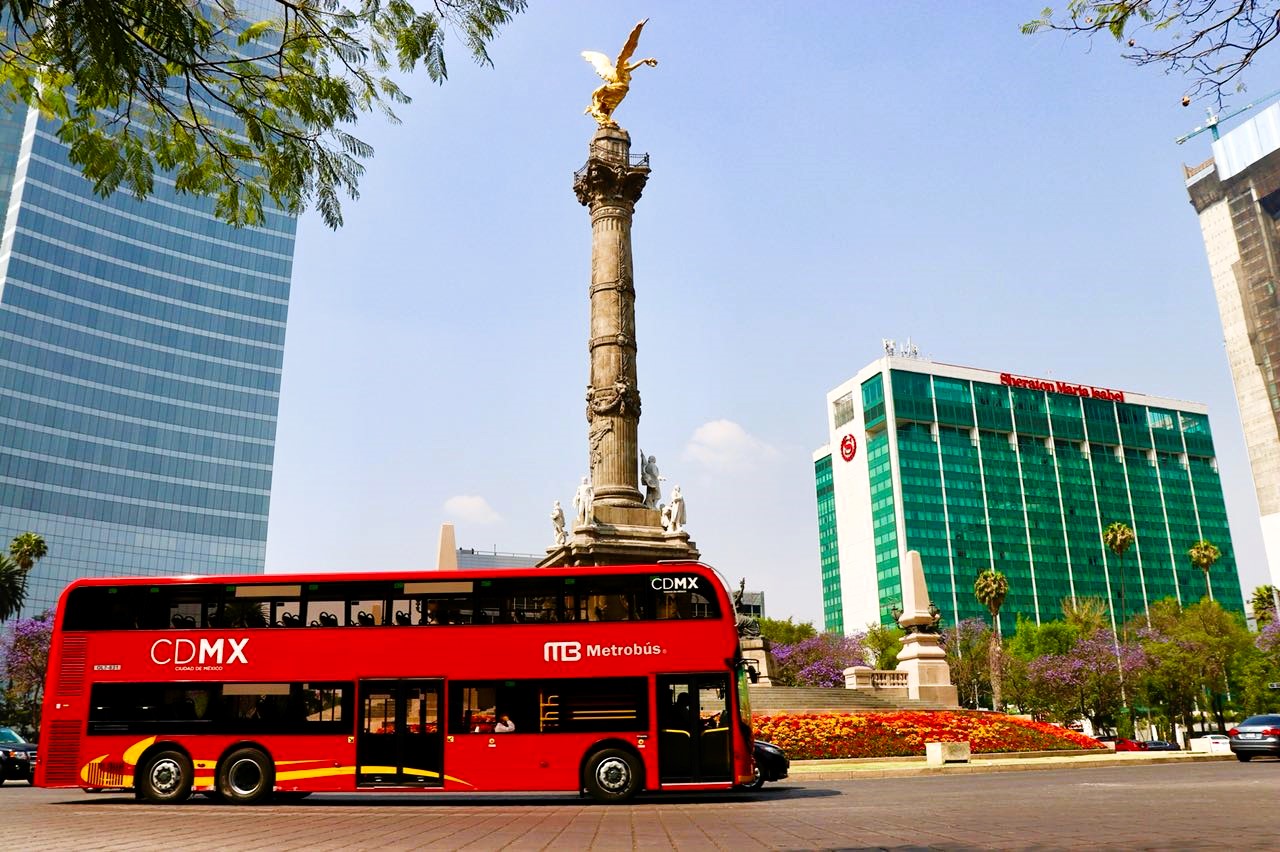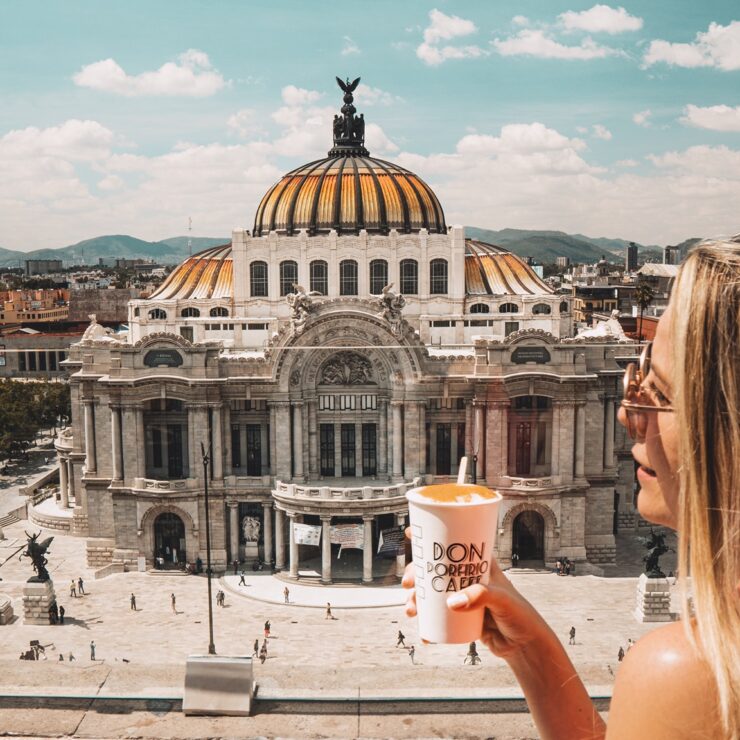Welcome, travelers, to one of the most vibrant and sprawling metropolises in the world—Mexico City! As the capital of Mexico, this bustling city of over 21 million people offers a treasure trove of cultural landmarks, historic sites, delicious cuisine, and lively neighborhoods. However, navigating a city of this size can be daunting for first-time visitors. Fear not! In this comprehensive guide, I’ll walk you through the ins and outs of getting around Mexico City using public transportation, taxis, and ride-sharing apps. Whether you’re exploring ancient ruins at Teotihuacan, strolling through Chapultepec Park, or savoring tacos in Coyoacán, this guide will help you move through the city like a local. Let’s dive in!
Why Mastering Transportation in Mexico City Matters
Mexico City, often referred to as CDMX (Ciudad de México), is a sprawling urban jungle spread over 1,485 square kilometers. With its blend of colonial architecture, modern skyscrapers, and vibrant street life, there’s something to see around every corner. However, traffic congestion and the sheer scale of the city can pose challenges for tourists. Understanding the transportation options available—ranging from the efficient metro system to convenient ride-sharing apps—will save you time, money, and stress, allowing you to focus on soaking in the city’s magic.
This guide is designed to be your go-to resource for navigating Mexico City, whether you’re on a budget, seeking comfort, or simply looking for the fastest way to get from point A to B. Let’s explore each option in detail, complete with practical tips to ensure a smooth journey.
1. Public Transportation: The Backbone of Mexico City Travel
Mexico City boasts one of the most extensive and affordable public transportation systems in Latin America. From the metro to buses and trolleybuses, these options are ideal for budget-conscious travelers and those looking to experience the city like a local.
The Mexico City Metro: Fast, Cheap, and Efficient
The Mexico City Metro (Sistema de Transporte Colectivo) is the second-largest subway system in North America, with 12 lines, 195 stations, and over 226 kilometers of track. It’s the quickest way to traverse the city, especially during rush hour when surface traffic grinds to a halt.
- Cost: A single ride costs just 5 MXN (about $0.25 USD), making it incredibly affordable. Purchase a rechargeable smart card (Tarjeta de Movilidad Integrada) for 15 MXN at any station to avoid buying paper tickets each time.
- Hours: The metro operates from 5:00 AM to midnight on weekdays, 6:00 AM to midnight on Saturdays, and 7:00 AM to midnight on Sundays and holidays.
- Key Lines for Tourists:
- Line 1 (Pink): Connects major areas like Insurgentes (near the Zona Rosa) and Chapultepec (for the park and museums).
- Line 2 (Blue): Takes you to the historic center (Zócalo) via the Bellas Artes station.
- Line 8 (Green): Useful for reaching Garibaldi, known for mariachi music.
- Tips:
- Avoid rush hours (7:00–9:00 AM and 5:00–7:00 PM) if possible, as trains can be packed.
- Keep an eye on your belongings; pickpocketing can occur in crowded stations.
- Women and children can use designated cars at the front of trains during peak hours for added safety.
- Download the official Metro app or use Google Maps for real-time navigation.
Metrobús: A Reliable Bus Rapid Transit System
The Metrobús is a modern bus system with dedicated lanes, making it faster than regular buses. It operates on seven main lines, connecting key areas of the city.
- Cost: A single ride is 6 MXN (about $0.30 USD) using the same rechargeable smart card as the metro.
- Hours: Operates from 4:30 AM to midnight on weekdays, with slightly reduced hours on weekends.
- Key Routes for Tourists:
- Line 1: Runs along Avenida Insurgentes, connecting the south (like Coyoacán) to central areas.
- Line 4: Links the historic center with the airport (Terminal 1 and 2).
- Tips:
- Board at designated stations, as these buses don’t stop just anywhere.
- Lines can get crowded, so plan extra time during peak hours.
RTP Buses and Trolleybuses: Budget-Friendly Options
Run by the Red de Transporte de Pasajeros (RTP), these buses and electric trolleybuses cover routes not served by the metro or Metrobús. They’re slower due to traffic but are incredibly cheap.
- Cost: Around 2–5 MXN per ride, depending on the route.
- Tips:
- Routes can be confusing for non-Spanish speakers, so ask locals or use apps like Moovit for guidance.
- Payment is usually cash-only, so keep small bills or coins handy.
Ecobici: Bike-Sharing for Short Trips
For eco-friendly travelers, Ecobici is Mexico City’s bike-sharing system, perfect for short trips in central areas like Reforma, Roma, and Condesa.
- Cost: A one-day pass is 118 MXN (about $6 USD), with annual memberships available for frequent visitors.
- Tips:
- Helmets aren’t provided, so bring your own for safety.
- Stick to bike lanes where available, as traffic can be chaotic.
2. Taxis in Mexico City: Convenience with Caution
Taxis are a popular way to get around Mexico City, especially for short trips or late-night travel when public transport isn’t as frequent. However, not all taxis are created equal, and safety is a concern for tourists.
Types of Taxis
- Sitio Taxis (Authorized Taxis): These are the safest option, operating from designated stands (sitios). They’re registered, metered, and often associated with hotels or specific locations.
- Cost: Starts at around 9–13 MXN for the first few kilometers, with additional charges per kilometer.
- Tips: Always confirm the fare or ensure the meter is running before starting your trip.
- Street Taxis: These are the pink-and-white or green-and-white cabs you’ll see everywhere. While many are legitimate, there’s a higher risk of scams or safety issues.
- Tips: Avoid hailing street taxis unless you’re familiar with the city. If you must, negotiate the fare upfront and avoid unmarked or suspicious-looking vehicles.
Safety Tips for Taxis
- Stick to sitio taxis or those recommended by your hotel.
- Never share a taxi with strangers.
- Keep your belongings close and avoid displaying valuables.
- If something feels off, trust your instincts and ask to be let out in a safe, public area.
3. Ride-Sharing Apps: Modern Convenience for Tourists
Ride-sharing apps have revolutionized transportation in Mexico City, offering a safer and more reliable alternative to traditional taxis. They’re especially popular among tourists due to their ease of use and transparent pricing.
Popular Ride-Sharing Apps
- Uber: The most widely used app in Mexico City, Uber offers a range of options from budget-friendly UberX to premium Uber Black.
- Cost: Fares vary based on distance and demand but are often comparable to or cheaper than taxis for short trips.
- Tips: Ensure your app is set up with a valid payment method before arriving. Uber accepts credit cards, making it cash-free.
- Didi: A Chinese-based app that’s gained traction in Mexico City, often offering competitive pricing and promotions.
- Cost: Similar to Uber, with occasional discounts for new users.
- Tips: Download the app in advance and check for promo codes.
- Cabify: Another reliable option, known for its focus on safety and professional drivers.
- Tips: Cabify allows you to book rides in advance, ideal for airport transfers.
Advantages of Ride-Sharing
- Safety: Drivers are registered, and trips are tracked via GPS. You can share your ride details with friends or family.
- Transparency: Fares are calculated upfront, so there’s no haggling or surprise charges.
- Convenience: Book a ride anytime, anywhere, with minimal wait times in most areas.
- Language Barrier: Apps handle everything digitally, reducing the need to speak Spanish.
Tips for Using Ride-Sharing Apps
- Always verify the driver’s name, photo, and license plate before getting in.
- Use the app’s safety features, like emergency contacts or ride-sharing options.
- Avoid surge pricing by traveling outside peak hours if possible.
4. Walking: Exploring on Foot in Central Areas
While Mexico City is vast, certain neighborhoods like the Historic Center, Roma, Condesa, and Polanco are pedestrian-friendly and perfect for exploring on foot. Walking allows you to stumble upon hidden gems—street art, local markets, and quaint cafés—that you might miss otherwise.
- Tips:
- Wear comfortable shoes, as sidewalks can be uneven.
- Stay aware of your surroundings, especially in crowded areas.
- Use pedestrian crossings and follow traffic signals, as drivers may not always yield.
5. Special Considerations: Airport Transfers and Day Trips
Getting To and From Mexico City International Airport (AICM)
- Metro: Line 5 (Yellow) connects Terminal 1 to the city, but it’s not ideal with luggage due to crowds and stairs.
- Metrobús: Line 4 offers a direct route from the airport to the historic center for just 30 MXN.
- Ride-Sharing/Taxis: Uber and authorized airport taxis are the most convenient options. Expect to pay 200–300 MXN (about $10–15 USD) to central areas.
- Tips: Avoid unofficial taxis outside the airport; use the authorized taxi booths inside the terminals.
Day Trips from Mexico City
For excursions to places like Teotihuacan or Xochimilco, consider:
- Public Transport: Buses from Terminal del Norte (for Teotihuacan) or the metro to Tasqueña (for Xochimilco) are affordable but time-consuming.
- Tours: Many companies offer guided day trips with transportation included, ideal for hassle-free travel.
- Ride-Sharing: Uber or Didi can be cost-effective for groups heading to nearby destinations.
Safety Tips for Getting Around Mexico City
- Stick to well-lit, busy areas when using public transport or walking, especially at night.
- Keep small bills and change for public transport, as vendors and drivers may not have change for larger denominations.
- Download offline maps or apps like Google Maps and Moovit to navigate without relying on data.
- Learn basic Spanish phrases like “¿Cuánto cuesta?” (How much does it cost?) or “¿Dónde está…?” (Where is…?) to communicate with drivers or locals.
Final Thoughts: Navigate Mexico City Like a Pro
Getting around Mexico City may seem overwhelming at first, but with a mix of public transportation, taxis, and ride-sharing apps, you’ll find it’s entirely manageable—and even enjoyable! Whether you’re hopping on the metro to visit the National Museum of Anthropology, taking an Uber to Frida Kahlo’s Casa Azul, or walking through the colorful streets of La Roma, each mode of transport offers a unique perspective on this dynamic city.
Remember to plan ahead, stay vigilant, and embrace the occasional chaos—it’s all part of the Mexico City experience. Have questions about a specific route or transportation tip? Drop them in the comments below, and I’ll be happy to help. And if this guide has been useful, share it with fellow travelers heading to CDMX!
Safe travels, and may your adventures in Mexico City be as vibrant as the city itself!



